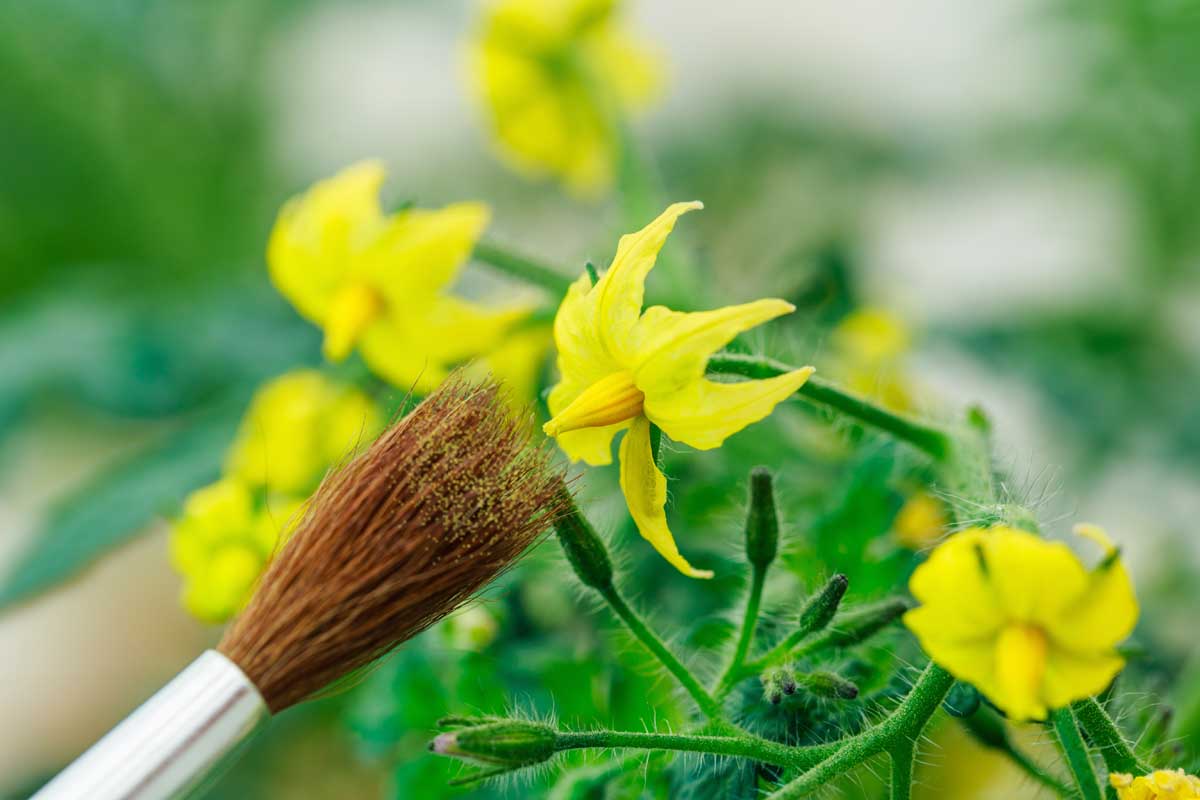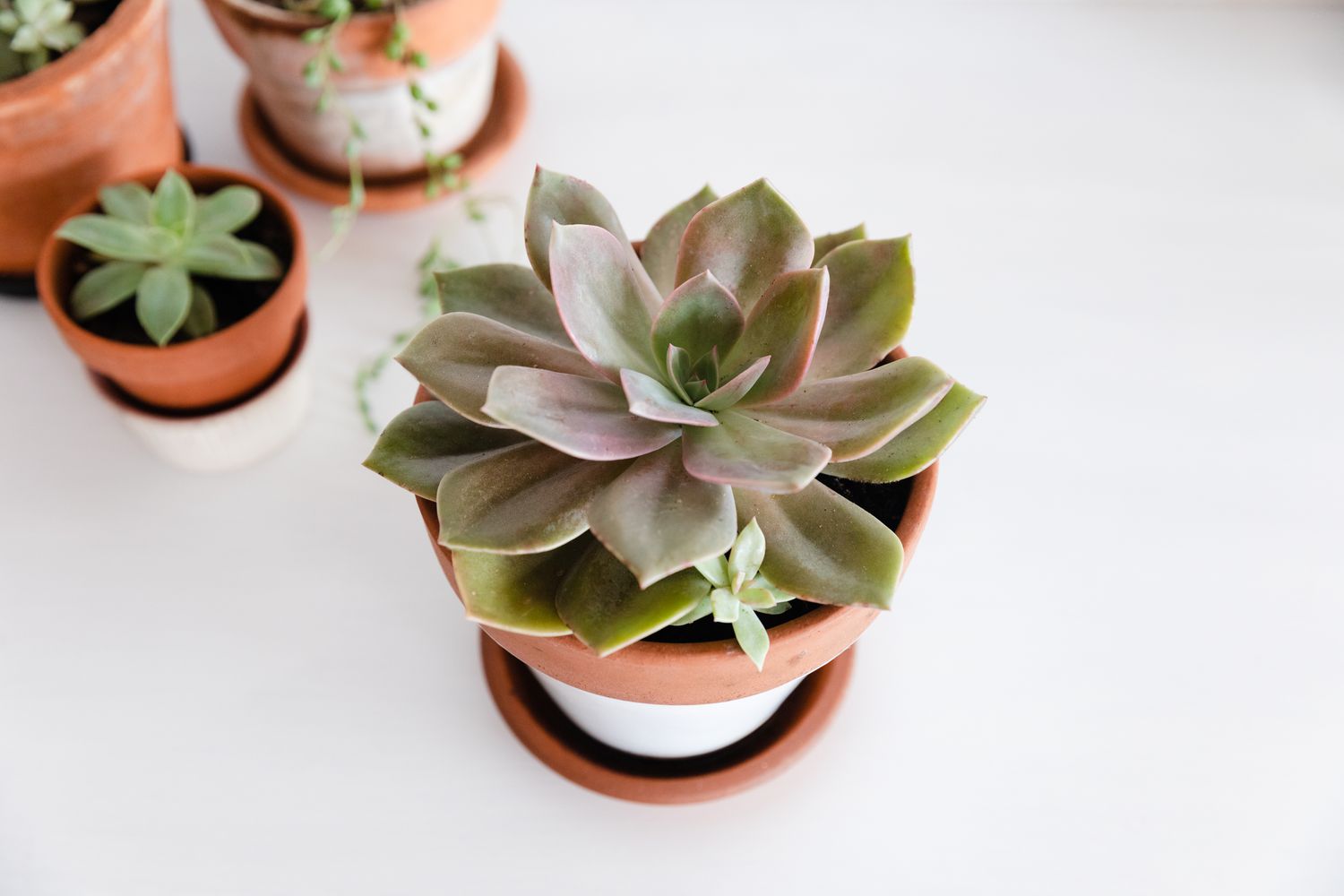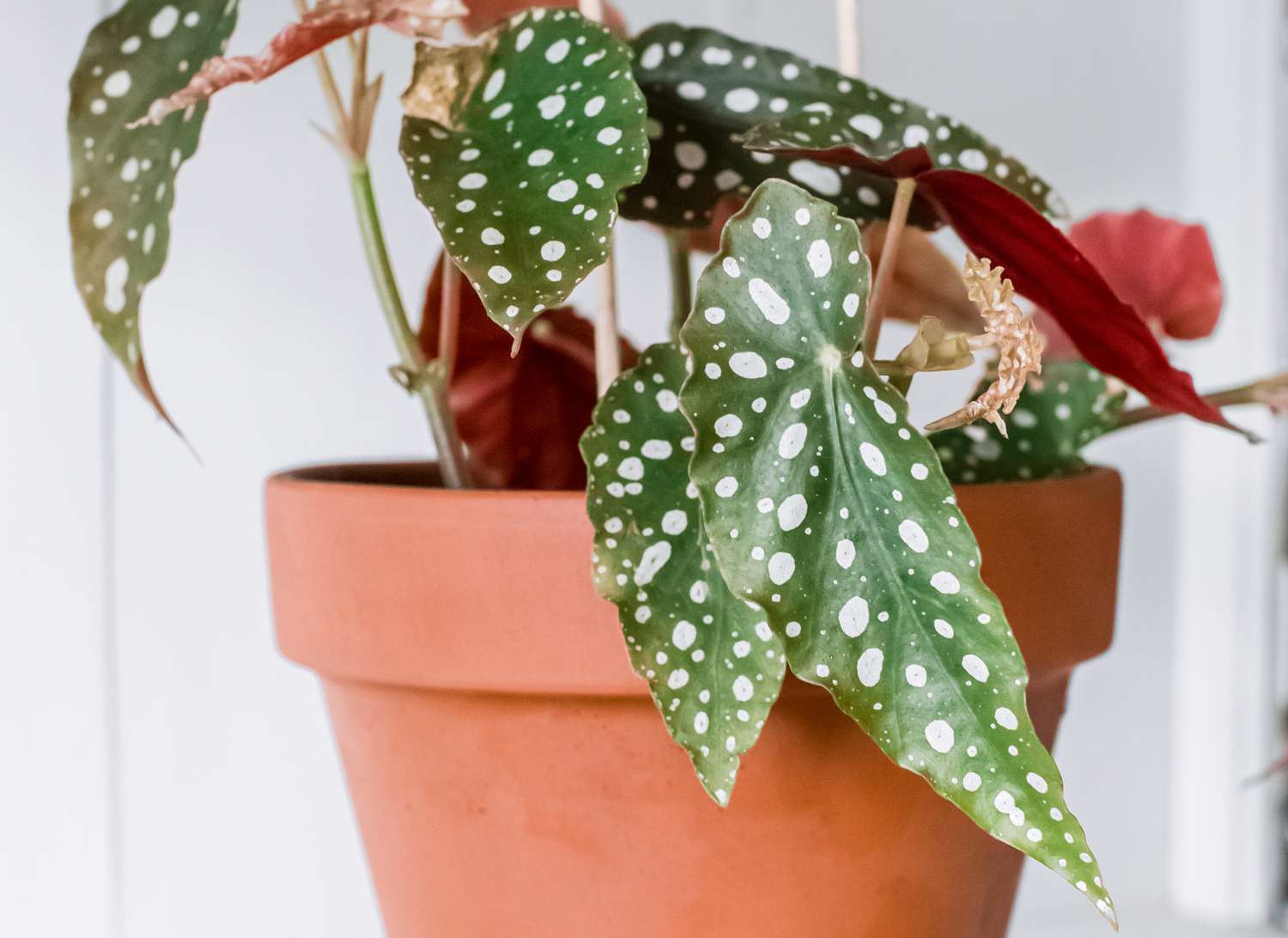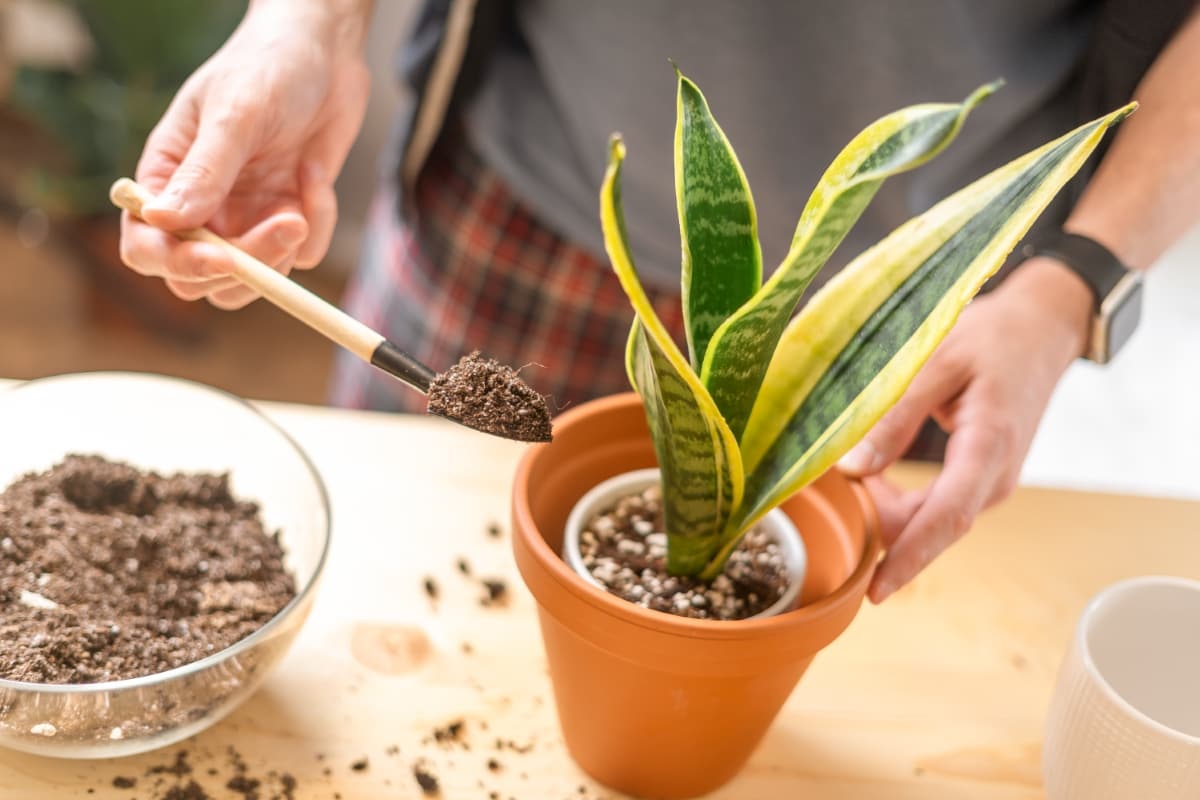Home>Food and Cooking>The Ultimate Guide To Drying And Preserving Garden Herbs With Vibrant Colors
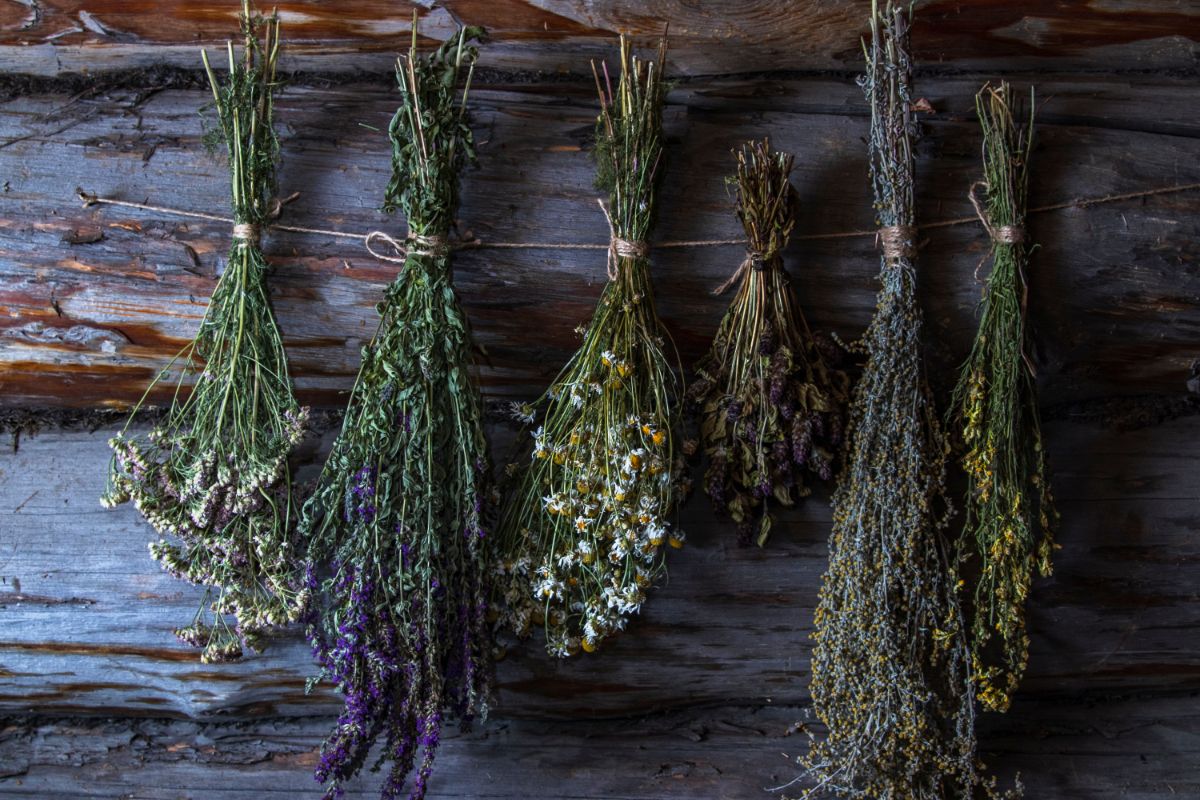

Food and Cooking
The Ultimate Guide To Drying And Preserving Garden Herbs With Vibrant Colors
Published: February 11, 2024
Learn how to dry and preserve garden herbs for vibrant colors with our ultimate guide. Perfect for food and cooking enthusiasts!
(Many of the links in this article redirect to a specific reviewed product. Your purchase of these products through affiliate links helps to generate commission for Noodls.com, at no extra cost. Learn more)
Table of Contents
Introduction
Drying and preserving garden herbs is a time-honored tradition that allows you to savor the flavors and aromas of your garden all year round. Whether you're a seasoned gardener or just starting to explore the world of herbs, learning how to dry and preserve them can elevate your culinary creations to new heights.
The process of drying herbs not only intensifies their flavors but also ensures that you have a readily available supply of these culinary treasures, even when they are out of season. By carefully preserving herbs, you can capture their vibrant colors and essential oils, allowing you to infuse your dishes with a burst of fresh, aromatic goodness.
In this comprehensive guide, we will delve into the art of drying and preserving garden herbs, exploring the best practices for choosing, harvesting, drying, and storing herbs to maintain their vibrant colors and potent flavors. Additionally, we will uncover tips for using dried herbs in cooking, empowering you to unleash the full potential of these culinary gems in your kitchen creations.
So, whether you have a bountiful herb garden or simply want to make the most of store-bought herbs, this guide will equip you with the knowledge and techniques to embark on a flavorful journey of drying and preserving herbs. Let's embark on this aromatic adventure and unlock the secrets of preserving garden herbs with vibrant colors!
Read more: How To Dry Rose Petals
Choosing the Right Herbs to Dry
Selecting the right herbs for drying is crucial to ensure that you capture the essence of their flavors and aromas. Not all herbs are suitable for drying, and some may retain their flavors and colors better than others. When choosing herbs to dry, consider the following factors to make the most of your drying endeavors:
Flavor and Aroma:
Opt for herbs that boast robust flavors and enticing aromas, as these qualities will intensify during the drying process. Herbs such as rosemary, thyme, oregano, and sage are renowned for their potent flavors and are excellent candidates for drying. Additionally, aromatic herbs like lavender and mint can infuse your dishes with delightful fragrances when dried.
Resilience to Drying:
Certain herbs are better suited for drying due to their sturdy leaves and low moisture content. Herbs with sturdy leaves, such as bay leaves and sage, tend to retain their shape and color well during the drying process. Delicate herbs with high moisture content, such as basil and cilantro, are more challenging to dry without losing their vibrant colors and flavors.
Culinary Versatility:
Consider the culinary applications of the herbs you intend to dry. Opt for versatile herbs that can be used in a wide range of dishes, from savory to sweet. Herbs like thyme, rosemary, and oregano are versatile additions to various cuisines, making them valuable choices for drying.
Read more: How To Dry Roses
Personal Preferences:
Take your personal preferences into account when selecting herbs for drying. If you have a penchant for a particular herb or enjoy experimenting with unique flavors, prioritize those herbs in your drying endeavors.
By carefully considering these factors, you can select the right herbs to dry, ensuring that you preserve their vibrant colors, potent flavors, and aromatic qualities. With the right herbs at your disposal, you can embark on a flavorful journey of drying and preserving garden herbs with confidence and culinary creativity.
Harvesting Herbs for Drying
Harvesting herbs for drying is a pivotal step in the process of preserving their vibrant colors and flavors. The timing and method of harvesting can significantly impact the quality of the dried herbs. To ensure optimal results, it's essential to approach the harvesting process with care and attention to detail.
Timing of Harvesting
The timing of harvesting herbs plays a crucial role in preserving their essential oils and flavors. As a general rule, it's best to harvest herbs for drying just before they flower. At this stage, the herbs are typically at their peak flavor and aroma, making it the ideal time to capture their essence for drying. Additionally, harvesting before flowering helps ensure that the herbs retain their vibrant colors, as the colors tend to fade once the plants enter the flowering stage.
Selecting Healthy Sprigs
When harvesting herbs for drying, it's important to select healthy, robust sprigs that are free from damage or disease. Look for sprigs that exhibit vibrant colors and are free from wilting or yellowing. Healthy sprigs not only contribute to the visual appeal of the dried herbs but also retain their flavors and aromas more effectively during the drying process.
Harvesting Techniques
The method of harvesting herbs can vary depending on the type of herb and its growth habits. For woody herbs such as rosemary and thyme, using sharp scissors or pruning shears to snip the sprigs is recommended. This method helps minimize damage to the plant and promotes healthy regrowth. For leafy herbs like basil and mint, gently pinching off the leaves from the stems is an effective harvesting technique. Regardless of the herb type, it's important to harvest in a manner that minimizes stress on the plants and preserves the integrity of the sprigs.
Consideration for Weather Conditions
Harvesting herbs during the optimal weather conditions can contribute to the quality of the dried herbs. It's advisable to harvest herbs on a dry day, preferably in the morning after the dew has evaporated. This timing helps ensure that the herbs are at their freshest, as excessive moisture can hinder the drying process and potentially compromise the quality of the herbs.
By approaching the harvesting process with attention to timing, selection, and technique, you can set the stage for successful herb drying and preservation. With carefully harvested sprigs in hand, you are ready to embark on the next phase of the journey—drying the herbs to capture their vibrant colors and aromatic essence.
Methods for Drying Herbs
Drying herbs is a time-honored method of preserving their flavors, aromas, and vibrant colors for culinary use. There are several effective methods for drying herbs, each offering unique advantages and considerations. By exploring these methods, you can select the approach that best suits your preferences and resources, ensuring that you preserve the essence of your garden herbs with precision and care.
Air Drying
Air drying, also known as hanging or bundling, is one of the simplest and most traditional methods for drying herbs. To air dry herbs, gather small bunches of herbs and secure them with twine or rubber bands. Hang the bundles upside down in a warm, well-ventilated area away from direct sunlight. As the herbs dry, their flavors and essential oils become concentrated, resulting in potent and aromatic dried herbs. Air drying is well-suited for woody herbs with low moisture content, such as rosemary, thyme, and oregano.
Oven Drying
Oven drying is a convenient method for quickly drying herbs while preserving their vibrant colors. To oven dry herbs, place clean and dry herb sprigs on a baking sheet and place them in an oven set to the lowest temperature, typically around 150°F (65°C). Keep the oven door slightly ajar to allow moisture to escape. Check the herbs regularly, as they can dry within 1-4 hours, depending on the herb type and moisture content. Oven drying is ideal for herbs with delicate leaves, such as basil and mint, as it helps retain their bright colors and delicate flavors.
Dehydrator Drying
Using a food dehydrator offers precise control over the drying process and is an efficient method for preserving herbs. Arrange clean herb sprigs in a single layer on the dehydrator trays, ensuring proper air circulation. Set the dehydrator to a low temperature, typically between 95-115°F (35-46°C), and allow the herbs to dry for 1-4 hours. Dehydrator drying is suitable for a wide range of herbs and provides consistent results, making it a valuable option for herb enthusiasts seeking optimal preservation.
Microwave Drying
Microwave drying is a quick and convenient method for drying small quantities of herbs. To microwave dry herbs, place clean and dry herb leaves or sprigs between paper towels and microwave them in short intervals of 20-30 seconds until they are dry and brittle. Microwave drying is best suited for herbs with high moisture content, such as parsley and chives, and offers a rapid solution for preserving herbs when time is of the essence.
By exploring these diverse methods for drying herbs, you can tailor your approach to suit the specific characteristics of the herbs you wish to preserve. Whether you opt for the simplicity of air drying, the precision of dehydrator drying, or the convenience of microwave drying, each method offers a pathway to capturing the vibrant colors, flavors, and aromas of your garden herbs, ensuring a bountiful supply of culinary delights throughout the year.
Preserving Herbs with Vibrant Colors
Preserving the vibrant colors of herbs during the drying process is essential for maintaining their visual appeal and enhancing the overall culinary experience. The colors of herbs not only contribute to the aesthetics of dishes but also signify the presence of essential nutrients and aromatic compounds. By employing specific techniques and handling methods, you can effectively preserve the vibrant colors of herbs, ensuring that they remain visually captivating and indicative of their freshness and potency.
Quick Drying Methods
When aiming to preserve the vibrant colors of herbs, opting for quick drying methods can be advantageous. Quick drying minimizes the exposure of herbs to prolonged heat and light, which can cause color degradation. Methods such as microwave drying and oven drying at low temperatures are effective for preserving the colors of delicate herbs like basil, parsley, and cilantro. These methods allow for rapid moisture removal while retaining the herbs' natural pigments, resulting in vibrant and visually appealing dried herbs.
Proper Handling and Storage
Proper handling and storage of herbs after drying are crucial for maintaining their vibrant colors. Once the herbs are dried to the desired level, it is essential to handle them with care to prevent color loss or damage. Avoid excessive crushing or grinding of the dried herbs, as this can lead to color deterioration. Instead, store the whole dried herbs in airtight containers, away from direct sunlight and moisture. This helps preserve their vibrant colors and protects them from environmental factors that could compromise their visual appeal.
Blanching and Freezing
Blanching fresh herbs before freezing is a technique that can help preserve their vibrant colors. Blanching involves briefly immersing the herbs in boiling water, followed by rapid cooling in ice water to halt the enzymatic processes that lead to color loss. Once blanched, the herbs can be frozen in airtight containers or freezer bags, retaining their vibrant colors for future use. This method is particularly effective for herbs like basil and mint, which are prone to color degradation during traditional drying processes.
Selective Harvesting
Harvesting herbs at the peak of their freshness and color intensity is essential for preserving their vibrant hues. By selectively harvesting herbs when they are at their visual best, you can capture their vibrant colors at the optimal stage. This approach ensures that the dried herbs maintain their visual allure, making them a delightful addition to culinary creations while signaling their potency and freshness.
By employing these techniques and best practices, you can effectively preserve the vibrant colors of herbs during the drying and preservation process. Whether you opt for quick drying methods, proper handling and storage, blanching and freezing, or selective harvesting, each approach contributes to maintaining the visual appeal and potency of dried herbs, allowing you to infuse your culinary endeavors with a burst of vibrant colors and flavors.
Storing Dried Herbs
Proper storage is paramount to maintain the quality, flavors, and aromas of dried herbs over an extended period. After diligently drying and preserving your garden herbs, it's essential to store them in a manner that safeguards their vibrant colors and potent essences. By employing suitable storage methods, you can ensure that your dried herbs remain fresh and flavorful, ready to elevate your culinary creations whenever inspiration strikes.
Airtight Containers
Storing dried herbs in airtight containers is a fundamental practice that helps protect them from moisture, light, and air exposure, which can compromise their quality. Opt for glass jars or containers with tight-sealing lids to create a protective environment that minimizes the risk of flavor degradation and color loss. Clear glass containers also allow you to admire the vibrant colors of the dried herbs, adding a visual element to your storage space.
Cool, Dark Location
Selecting an appropriate storage location is crucial for preserving the flavors and colors of dried herbs. Choose a cool, dark area away from direct sunlight, as exposure to light can cause the herbs to fade and lose their potency. A pantry, cupboard, or drawer in the kitchen provides an ideal environment for storing dried herbs, shielding them from light and maintaining a consistent, cool temperature.
Labeling and Date
Maintaining organized storage of dried herbs is simplified by labeling each container with the herb's name and the date of drying. Clear and accurate labeling ensures that you can easily identify the herbs and track their freshness. Additionally, noting the date of drying allows you to monitor the shelf life of the herbs, ensuring that you use them at their peak quality.
Whole Leaves vs. Ground
Deciding whether to store dried herbs as whole leaves or in ground form depends on your culinary preferences and usage patterns. Whole leaves retain their flavors and colors more effectively, making them an excellent choice for long-term storage. However, if you frequently use herbs in powdered form, grinding them as needed can help preserve their potency. Regardless of the form, proper storage in airtight containers is essential to maintain the herbs' quality.
Freezing for Longevity
For extended storage, consider freezing dried herbs to maintain their vibrant colors and flavors. Place the dried herbs in airtight freezer bags or containers and store them in the freezer. Freezing helps preserve the herbs' essential oils and colors, ensuring that they remain fresh for an extended period. This method is particularly beneficial for herbs that are not frequently used, allowing you to enjoy their flavors throughout the year.
By adhering to these best practices for storing dried herbs, you can safeguard their vibrant colors, potent flavors, and aromatic essences, ensuring that they remain a valuable asset in your culinary repertoire. With proper storage, your dried herbs will continue to infuse your dishes with a burst of fresh, aromatic goodness, enhancing your culinary creations with the essence of your garden harvest.
Tips for Using Dried Herbs in Cooking
Dried herbs are culinary treasures that possess the power to elevate dishes with their concentrated flavors and aromatic profiles. When incorporating dried herbs into your cooking, it's essential to wield them with finesse and creativity to unlock their full potential. Whether you're a seasoned chef or an enthusiastic home cook, mastering the art of using dried herbs can transform your culinary creations into flavorful masterpieces. Here are some invaluable tips for harnessing the essence of dried herbs in your cooking endeavors:
1. Understanding Flavor Potency
Dried herbs pack a potent punch of flavor, and as such, they should be used sparingly to avoid overpowering the dish. It's crucial to understand the potency of different dried herbs and adjust the quantities accordingly. For example, robust herbs like dried rosemary and thyme require smaller amounts compared to milder herbs like dried parsley and basil. Start with a conservative amount and gradually adjust to achieve the desired flavor profile.
2. Infusing Aromas in Oils and Sauces
Harness the aromatic essence of dried herbs by infusing them into oils, vinegars, and sauces. Create herb-infused oils by steeping dried herbs in olive oil to impart their flavors into the oil, adding depth to dressings, marinades, and sautés. Similarly, infusing dried herbs into sauces and soups during the cooking process allows their flavors to permeate the dish, enhancing the overall taste experience.
3. Balancing Heat and Time
When using dried herbs in cooking, it's essential to strike a balance between heat and time. While some robust herbs like dried bay leaves and sage benefit from longer cooking times to release their flavors, delicate herbs like dried basil and oregano are best added towards the end of the cooking process to preserve their fragrant nuances. Understanding the optimal timing for adding dried herbs ensures that their flavors are fully integrated into the dish.
4. Reviving Aromatics with Heat
Revive the aromatic qualities of dried herbs by gently toasting them in a dry pan before adding them to dishes. Toasting dried herbs releases their essential oils and intensifies their flavors, imparting a rich depth to the dish. This technique is particularly effective for robust herbs like dried cumin and coriander seeds, enhancing their aromatic profiles and infusing the dish with a delightful complexity.
5. Garnishing and Finishing Touches
Utilize dried herbs as a finishing touch to garnish and elevate the visual appeal of dishes. Sprinkling a pinch of dried herbs, such as parsley or dill, over a finished dish adds a burst of color and a final flourish of flavor. The vibrant colors of dried herbs not only enhance the presentation of the dish but also signal the infusion of aromatic goodness, delighting the senses before the first bite.
6. Experimenting with Flavor Combinations
Embrace creativity by experimenting with unique flavor combinations using dried herbs. Blend complementary herbs to create custom seasoning blends that cater to your culinary preferences. For example, combining dried thyme, rosemary, and oregano yields a versatile herb blend that complements a wide range of dishes, from roasted meats to savory stews. By exploring diverse flavor pairings, you can craft signature flavor profiles that elevate your culinary repertoire.
Mastering the art of using dried herbs in cooking empowers you to infuse your dishes with a symphony of flavors and aromas, transforming everyday meals into culinary delights. By understanding the nuances of flavor potency, infusing aromas, balancing heat and time, reviving aromatics, garnishing with finesse, and embracing experimentation, you can harness the essence of dried herbs to create memorable dining experiences. With these tips in hand, you are poised to embark on a flavorful journey, enriching your culinary creations with the timeless allure of dried herbs.
Conclusion
In conclusion, the art of drying and preserving garden herbs with vibrant colors is a rewarding endeavor that allows you to capture the essence of your garden harvest and infuse your culinary creations with a burst of fresh, aromatic goodness. Throughout this comprehensive guide, we have explored the intricacies of choosing, harvesting, drying, preserving, and utilizing dried herbs, uncovering the techniques and best practices that empower you to embark on a flavorful journey of herb preservation.
By carefully selecting the right herbs for drying, considering factors such as flavor, resilience, culinary versatility, and personal preferences, you can lay the foundation for successful herb preservation. The process of harvesting herbs at the optimal stage, employing suitable techniques, and considering weather conditions ensures that you capture the vibrant colors and essential oils of the herbs, setting the stage for effective drying and preservation.
Exploring diverse methods for drying herbs, including air drying, oven drying, dehydrator drying, and microwave drying, provides you with a range of options to preserve the flavors, aromas, and vibrant colors of different herbs. Additionally, employing specific techniques such as quick drying methods, proper handling and storage, blanching and freezing, and selective harvesting contributes to maintaining the visual appeal and potency of dried herbs.
Furthermore, understanding the nuances of storing dried herbs in airtight containers, selecting suitable storage locations, labeling and dating, and considering the form of storage, whether whole leaves or ground, ensures that your dried herbs remain fresh and flavorful for extended periods. Additionally, freezing dried herbs offers a valuable solution for long-term preservation, allowing you to enjoy their vibrant colors and flavors throughout the year.
Finally, mastering the art of using dried herbs in cooking by understanding flavor potency, infusing aromas, balancing heat and time, reviving aromatics, garnishing with finesse, and experimenting with flavor combinations empowers you to create memorable dining experiences and elevate your culinary repertoire.
In essence, the journey of drying and preserving garden herbs with vibrant colors is a testament to the timeless allure of culinary traditions and the bountiful gifts of nature. By embracing the techniques, best practices, and creative possibilities presented in this guide, you are equipped to savor the flavors, aromas, and vibrant colors of your garden herbs year-round, enriching your culinary creations with the essence of your garden harvest. So, let the aromatic adventure begin, and may your culinary endeavors be forever infused with the vibrant allure of dried herbs.

